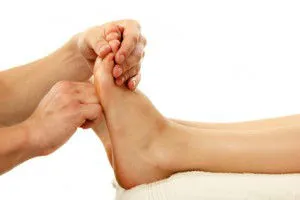Reflexology has been used for centuries to promote healing and wellness. It is much more than a massage, with its closest healing modality kin considered to be acupuncture as both rely on the concept of “qi” or “chi” referring to the theoretical life force that flows through all living things.
Similar to the way an acupuncturist inserts needles into certain areas of the body to unblock stagnant qi in other parts of the body, reflexology may be applied to certain areas such as the feet or hands in order to affect another part of the body.
The exact origins of this healing art remain a mystery but it is believed to have originated in China more than 5,000 years ago, with evidence that by 2500 BC practitioners in the country had already divided the body into longitudinal meridians.
Reflexology was developed in the US about 100 years ago and was originally known as “zonal therapy,” coined by Dr. William H. Fitzgerald, based on his belief that certain areas on the hands and feet were linked to other areas and organs of the body.
Today, reflexology is used for the following:
- Stress reduction and relaxation
- Pain relief
- Strengthening the immune system
- Improving digestive disorders
- Improving circulation
Reflexology’s wide range of health benefits has been clinically studied and found to be effective for a number of medical issues, including conditions like multiple sclerosis. The basics of how it works includes applying pressure to a reflex point with the touch stimulating sensitive sensory cells on the skin’s surface known as receptor nerve cells. Messages are then sent from the cells through nerve pathways and to the control center via the spinal cord and brain with a response sent back to the muscles or internal organs.
This non-invasive therapy is totally safe and comes without any harmful side effects often found with more conventional medical treatments. It can also address the root cause of an illness rather than just its symptoms in addition to helping to prevent health problems by strengthening the immune system and promoting better overall well-being.
Practicing Reflexology on Yourself
You can visit a certified reflexologist, or you can learn to use this ancient healing method on yourself. You’ll find many books on the subject, as well as websites dedicated to the practice in which you can learn more. Before practicing on someone else, spend time studying and practicing on yourself.
You’ll need to learn where the reflexes are on the feet that correspond to each limb, organ and gland in the body. By applying pressure to these specific points, you’ll stimulate the corresponding body part.
For example, by applying gentle pressure to the reflexes on the feet, you can reduce pain as it helps stimulate the body to create endorphins, which in turn interrupt the pain cycle. Pressing on the reflex points of the ball of your foot, where the toes join with the rest of the foot, can help stimulate circulation to aid the body in removing toxins in the lymphatic and digestive systems.
For general pain and discomfort, press all of the reflex points on each one of your feet for about ten seconds each time using light pressure. Pay close attention to spots that feel sore. When discomfort is felt in a reflex point, the corresponding organ or limb may be out of balance.

The benefits of learning reflexology are well worth the time and effort it takes to learn!
-The Alternative Daily
Sources:
http://www.wikihow.com/Do-Reflexology
http://www.examiner.com/article/natural-healing-the-ancient-art-of-reflexology-healing-pain-through-touch
